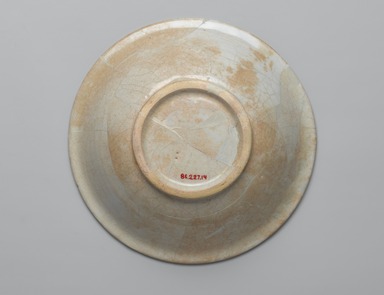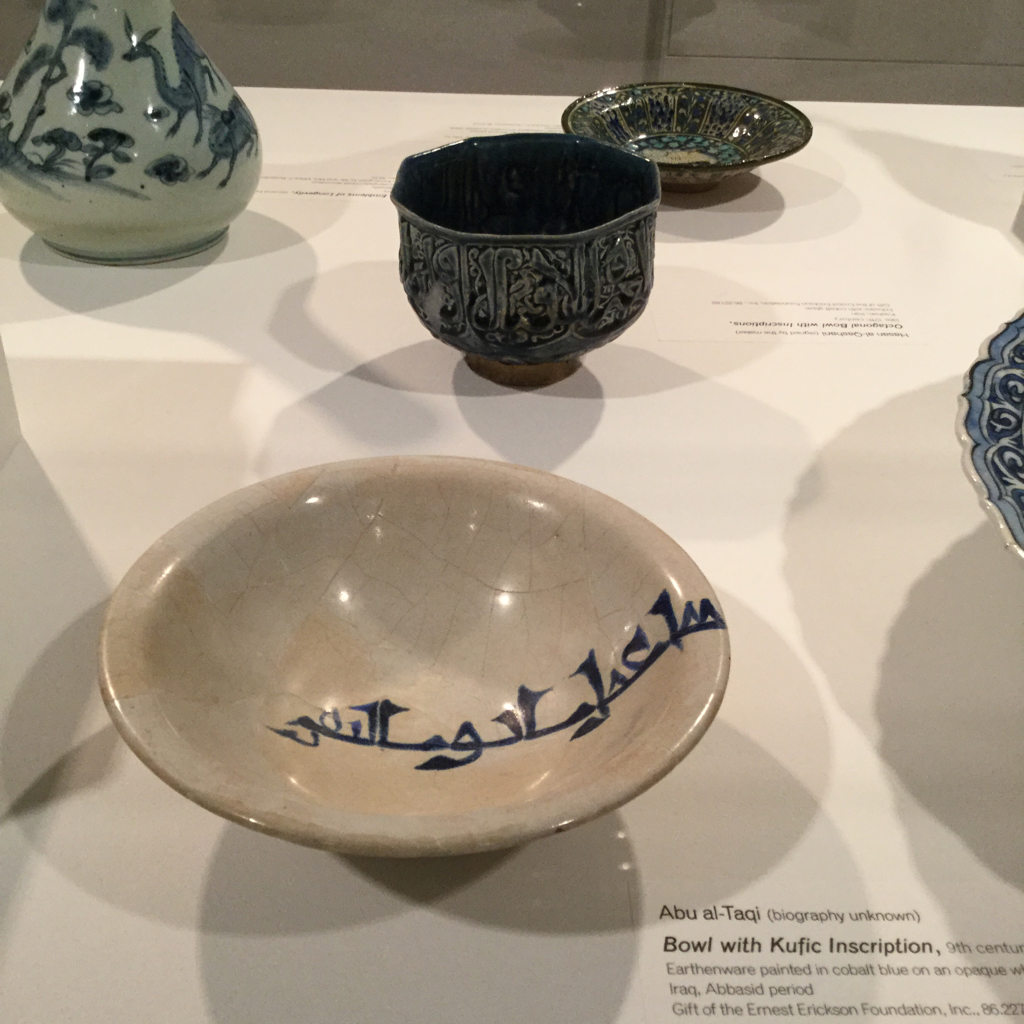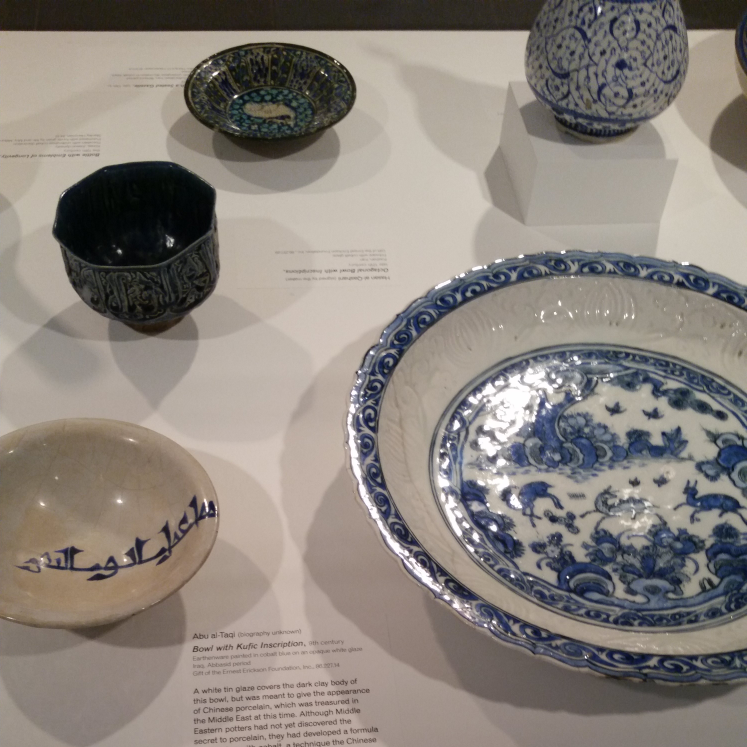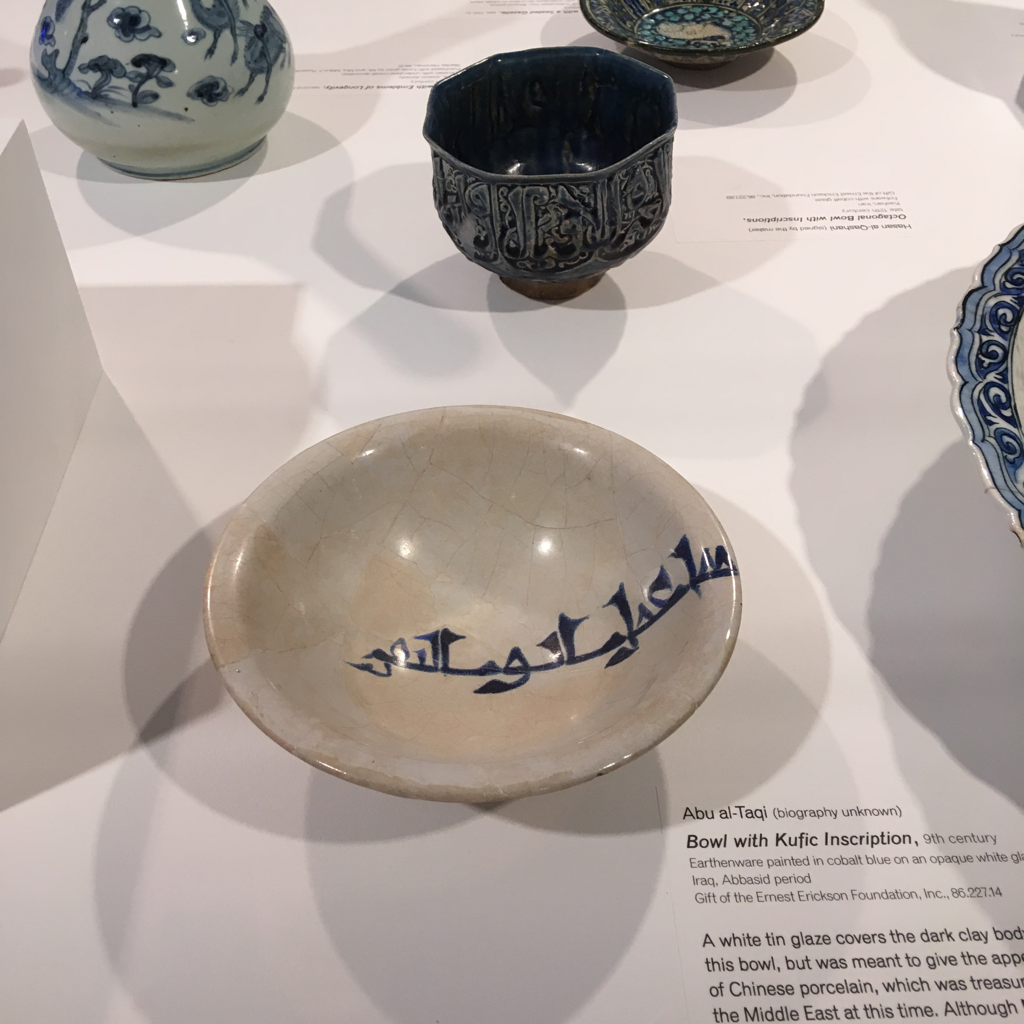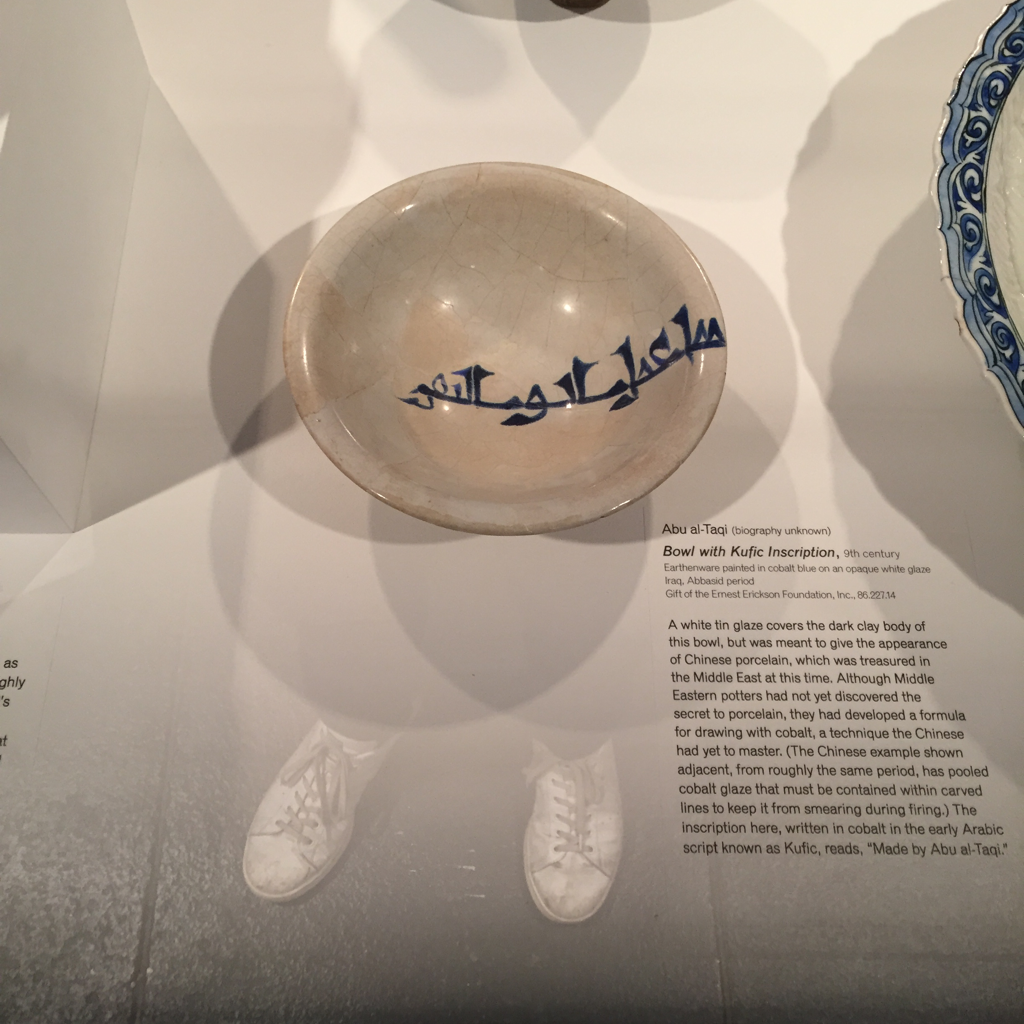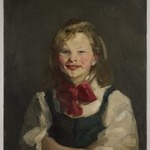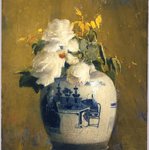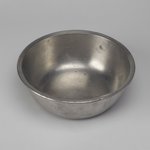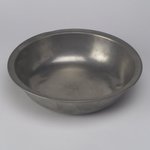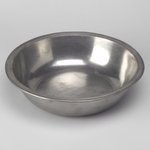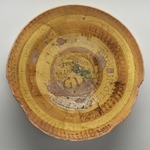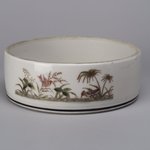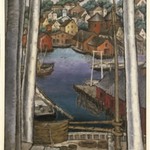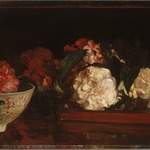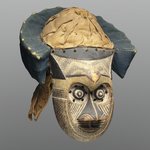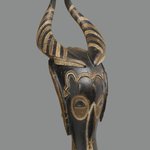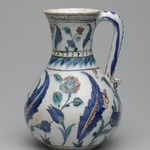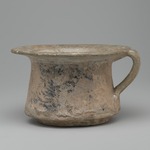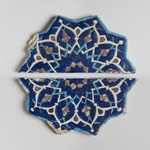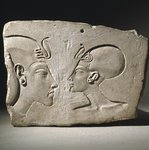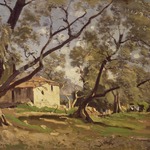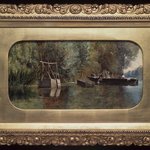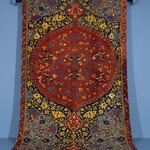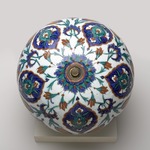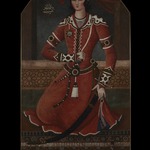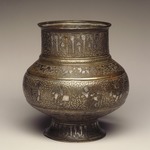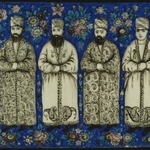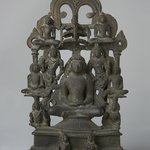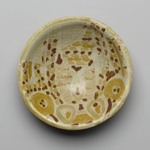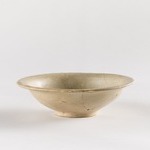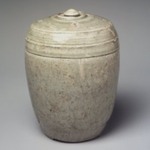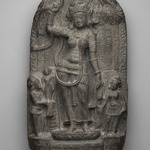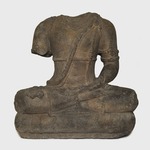

Bowl with Kufic Inscription, 9th century. Ceramic; earthenware, painted in cobalt blue on an opaque white glaze, 2 1/2 x 8 5/8 in. (6.4 x 21.9 cm). Brooklyn Museum, Gift of the Ernest Erickson Foundation, Inc., 86.227.14. Creative Commons-BY (Photo: Brooklyn Museum, 86.227.14_top_PS2.jpg)
Bowl with Kufic Inscription
Arts of the Islamic World
On View: Arts of the Islamic World, 2nd floor
A white tin glaze covers the dark clay body of this bowl, but was meant to give the appearance of Chinese porcelain, which was treasured in the Middle East at this time. Although Middle Eastern potters had not yet discovered the secret to porcelain, they had developed a formula for drawing with cobalt, a technique the Chinese had yet to master. (The Chinese example shown adjacent, from roughly the same period, has pooled cobalt glaze that must be contained within carved lines to keep it from smearing during firing.) The inscription here, written in cobalt in the early Arabic script known as Kufic, reads, “Made by Abu al-Taqi.”
MEDIUM
Ceramic; earthenware, painted in cobalt blue on an opaque white glaze
DATES
9th century
DYNASTY
`Abbasid
PERIOD
Abbasid period
DIMENSIONS
2 1/2 x 8 5/8 in. (6.4 x 21.9 cm) (show scale)
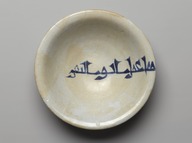


SIGNATURE
Signed: "the work of Abu al-Taqi"
INSCRIPTIONS
مما عمل أبو التقي
made by Abu al-Taqi
The Inscription read by Abdullah Ghouchani
COLLECTIONS
Arts of the Islamic World
ACCESSION NUMBER
86.227.14
CREDIT LINE
Gift of the Ernest Erickson Foundation, Inc.
PROVENANCE
Prior to 1958, provenance not yet documented; by 1958, acquired by Ernest Erickson of New York, NY; December 16, 1986, gift of Ernest Erickson Foundation, Inc. to the Brooklyn Museum.
Provenance FAQ
EXHIBITIONS
MUSEUM LOCATION
This item is on view in Arts of the Islamic World, 2nd floor
CAPTION
Bowl with Kufic Inscription, 9th century. Ceramic; earthenware, painted in cobalt blue on an opaque white glaze, 2 1/2 x 8 5/8 in. (6.4 x 21.9 cm). Brooklyn Museum, Gift of the Ernest Erickson Foundation, Inc., 86.227.14. Creative Commons-BY (Photo: Brooklyn Museum, 86.227.14_top_PS2.jpg)
IMAGE
top, 86.227.14_top_PS2.jpg. Brooklyn Museum photograph, 2009
"CUR" at the beginning of an image file name means that the image was created by a curatorial staff member. These study images may be digital point-and-shoot photographs, when we don\'t yet have high-quality studio photography, or they may be scans of older negatives, slides, or photographic prints, providing historical documentation of the object.
RIGHTS STATEMENT
Creative Commons-BY
You may download and use Brooklyn Museum images of this three-dimensional work in accordance with a Creative Commons license. Fair use, as understood under the United States Copyright Act, may also apply.
Please include caption information from this page and credit the Brooklyn Museum. If you need a high resolution file, please fill out our online application form (charges apply).
For further information about copyright, we recommend resources at the United States Library of Congress, Cornell University, Copyright and Cultural Institutions: Guidelines for U.S. Libraries, Archives, and Museums, and Copyright Watch.
For more information about the Museum's rights project, including how rights types are assigned, please see our blog posts on copyright.
If you have any information regarding this work and rights to it, please contact copyright@brooklynmuseum.org.
RECORD COMPLETENESS
Not every record you will find here is complete. More information is available for some works than for others, and some entries have been updated more recently. Records are frequently reviewed and revised, and we welcome any additional information you might have.

